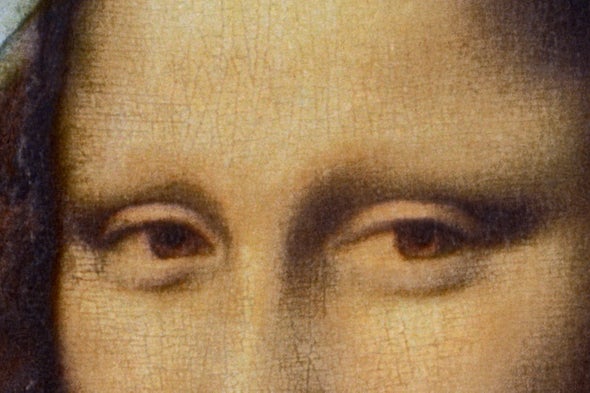(单词翻译:单击)
听力文本
This is Scientific American — 60-Second Science. I'm Christopher Intagliata.
Leonardo da Vinci's most famous painting also has an optical illusion named for it: the Mona Lisa effect. It's the feeling that the subject of a painting is following you with her gaze. "You continuously feel being looked at, despite moving to the left or moving to the right, perhaps even rotating the picture."
Sebastian Loth is a psychologist at the University of Bielefeld in Germany. And while he doesn't dispute that the illusion itself exists — you've probably also seen it in the Uncle Sam Army recruitment poster — he says there's a problem with the phenomenon's name.
"I can show you so many papers where people have literally started their introduction with 'We all know that Mona Lisa looks at you,' and so on and so forth, and then they'd go into their argument, whatever it is, but actually she, in this specific picture, doesn't look at you."

He and his colleague Gernot Horstman conducted a scientific investigation of this claim by sitting 24 volunteers in front of a computer screen, which displayed various magnifications of the Mona Lisa. They placed rulers at two distances between the subjects and the screen. Then asked the subjects to indicate where on the rulers the Mona Lisa's gaze intersected.
"And then you can compute a line, that's basically school mathematics here, and then you can figure out the angle. And what came out was 15 degrees to the right." So the Mona Lisa actually stares over the viewer's right shoulder, he says. Not straight out of the canvas — the key to creating her namesake illusion. The write-up is in the journal i-Perception.
Loth says effects like these can have modern implications, too. For example, when building virtual assistants on computers, which might need to speak to — and make eye contact with — more than one person in a room. As for da Vinci's masterpiece, there's still another illusion that remains: the mysterious ambiguity of the Mona Lisa's smile.
Thanks for listening for Scientific American — 60-Second Science. I'm Christopher Intagliata.
参考译文
这里是科学美国人——60秒科学。我是克里斯托弗·因塔利亚塔。
列奥纳多·达·芬奇最著名的画作还有一种以其命名的视错觉:蒙娜丽莎效应。这是指画中人物用她的目光追随你的感觉。“你一直感觉自已在被盯着看,无论你是向左还是向右移动,或者甚至是转动画像,都会有这种感觉。”
德国比勒菲尔德大学的心理学家塞巴斯蒂安·罗思说到。虽然他并不怀疑这种错觉的存在——可能你在看山姆大叔征兵海报时也会有这种错觉——但他表示,这种现象的名字存在问题。
“我可以给你看很多论文,那些论文引言的开头部分都是‘我们都知道蒙娜丽莎在看着你’等等,之后他们便开始论证,无论如何论证,但事实上,这幅画中的人并没有在看你。”
他和同事赫尔诺特·霍斯特曼对这种说法进行了科学研究,他们让24名志愿者坐在电脑屏幕前,屏幕上显示着各种放大版的《蒙娜丽莎》。他们在参与者和屏幕之间放置了尺子。之后他们让参与者指出蒙娜丽莎的视线与尺子的哪个点相交。
“然后你可以计算一条直线,基本上就是学校数学教授的内容,之后算出角度。结果是向右15度。”因此,他认为蒙娜丽莎实际上是在看观看者的右肩。她的视线并非直接冲出画布,这是创造了与她同名的错觉的关键。这篇报告发表在《i-Perception》期刊上。
罗思表示,这类效应可能也有现代意义。比如,在计算机上创建虚拟助手时,可能需要让助手与房间里的多个人进行交谈和眼神交流。至于达芬奇的大作,还有另一种错觉存在,即:蒙娜丽莎神秘又暧昧的微笑。
谢谢大家收听科学美国人——60秒科学。我是克里斯托弗·因塔利亚塔。
译文为可可英语翻译,未经授权请勿转载!
重点讲解
重点讲解:
1. be named for 命名;给…取名;
The boy is named for his grandfather.
这男孩是以祖父的名字起名儿的。
2. and so on and so forth 及诸如此类;等等;
He inquired about the varieties, specifications and price, and so on and so forth.
他询问了品种、花色和价格等情况。
3. figure out 算出;
Have you figured out how much the trip will cost?
旅行要花多少费用你算出来没有?
4. as for 至于…;
As for Jo, she's doing fine.
至于乔,她现在日子过得不错。


